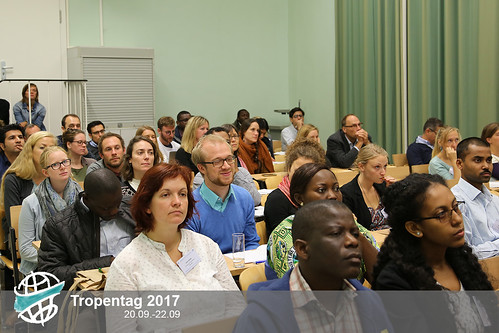Reply to comment
Where Does the Water Go?
Thu, 09/21/2017 - 13:25 — kristianj71
You have to throw caution to the wind when you walk into the oral or poster sessions. You never know what you are going to get.
The "Water and Irrigation" oral presentations ranged from brave, young newcomers exposing their masters’ theses to the world, to veterans summarizing already published work. Here, as in most disciplines this conference, modeling has assumed a large role. After the session, I grabbed Dr. Giese from the University of Hohenheim, who pointed out though that, while part of the future of agricultural science, there were significant constraints due to limited available data. After all, without any connection to the real world, models have little relevance.
He particularly enjoyed Wiebke Niether’s investigation into the “Reciprocal Effects of Soil Mositure Dynamics and Land-Use Systems with Cocoa in Alto, Beni, Bolivia”, and her use of vivid graphics to reflect the soil moisture dynamics over a 30-month period in different land-use systems for cocoa production. He knew from his own experience measuring soil moisture, to produce such a seemingly simple thing, required an incredible amount of work in difficult conditions. After all, as much as it is the job of a scientist to discover, effectively communicating their research is just as valuable.




